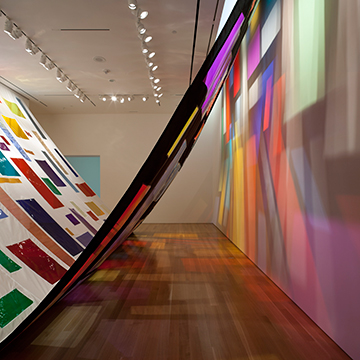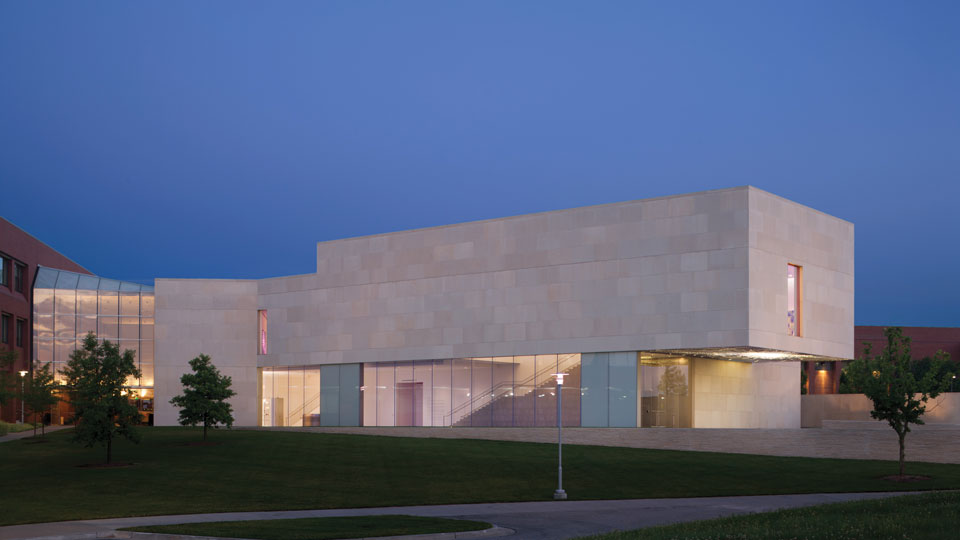Museum Interrupted
Rachel Hayes · Anne Lindberg · Miles Neidinger
In celebration of the Kansas City Art Institute's 125th Anniversary, three Kansas City based artists were each invited to create site specific installations (respectively) within three of the Nerman Museum's second floor galleries. Rachel Hayes (Fiber 1999) and Miles Neidinger (Sculpture 2000) both received BFA degrees from KCAI, while Anne Lindberg was a former Assistant Professor (1990-99) in the Institute's Foundations Department. Each artist responded to the architecture and space of a particular gallery - and each installation dramatically transforms that space.
Working within the parameters of the Nerman Museum’s Barton P. and Mary D. Cohen Gallery, artist Rachel Hayes envisioned an immense, room-size installation - fabricated from light gels and fabric - which would utilize light and texture to create an experiential work. According to Hayes, “I am interested in creating a work that functions on multiple levels within the space – as a fascinating object, as a minimalist sculpture, as an architectural space/divider, as an abstract painting, as a massive patchwork quilt, as a place of awe and reverence.”
Anne Lindberg chose the more intimately scaled McCaffree Gallery as the site to execute raume yellow. “I found myself recently under a brilliant blue tent eating a juicy yellow/orange peach. When I returned to my studio, I immediately decided to build a version of my ongoing graphite line drawings in space, in yellow,” related Lindberg. Using just a single material, Egyptian cotton thread, the other major elements of Lindberg’s mesmerizing installation are staples and tension. With the taut, horizontal passage of tens of thousands of lines, an abstract, mysterious form - optical and immaterial - transfixes viewers.
The Oppenheimer New Media Gallery is the site for Miles Neidinger’s enigmatic, shimmering Everything we see is never enough. Employing commonplace materials such as twist ties, drinking straws, and yarn, his installation addresses notions of banality and beauty; synthetic and organic; repulsion and attraction. Suspended from three points in the ceiling, his installation cascades to the gallery floor, erupting in riotous, brilliant hues. “It is a sinister response to a cultural drive to organize according to object-hood and to accumulate and consume with an unquenchable thirst,” stated Neidinger.





